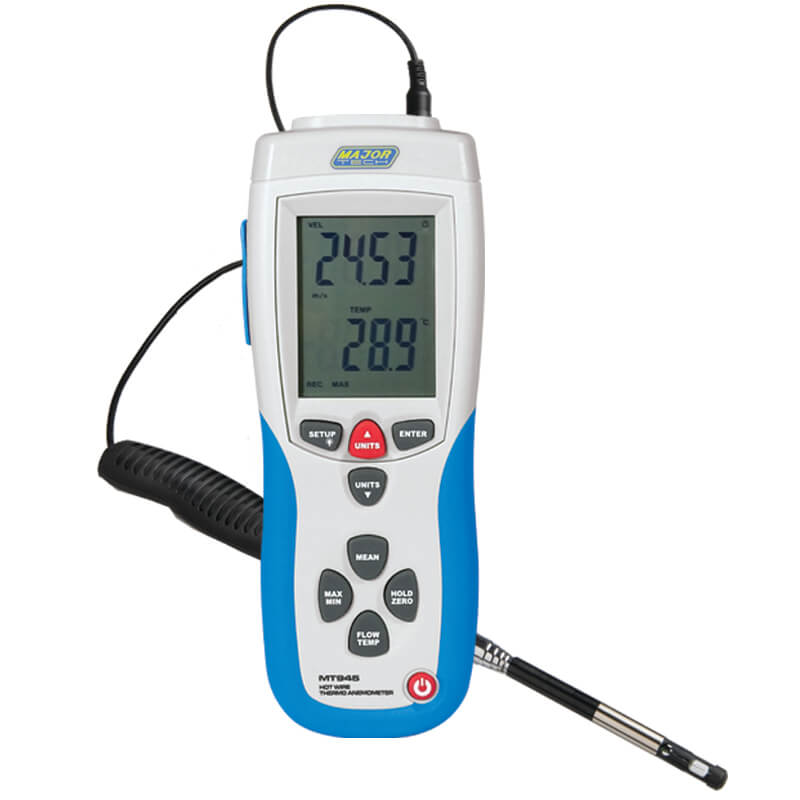Recognizing Various Types of Anemometers for Different Applications
Recognizing Various Types of Anemometers for Different Applications
Blog Article
All You Required to Know About Anemometers: How They Function, Why They Issue, and Where to Use Them
Anemometers, however commonly ignored in the realm of scientific instruments, play a crucial duty in various fields, using important insights into wind speed and air flow patterns. As we dive into the details of anemometer technology, we will discover the inner operations of these devices, their importance, and the crucial factors to consider when choosing the ideal anemometer for specific applications.

Anemometer Basics
An essential tool used to gauge wind rate and instructions, the anemometer plays a vital duty in weather forecasting and different sectors. An anemometer normally is composed of 3 or 4 cups that rotate in the wind, a vane that points into the wind, and sensing units to track the activities or rotations.
There are different kinds of anemometers offered, consisting of cup anemometers, vane anemometers, hot-wire anemometers, and sonic anemometers, each with its distinct features and applications. Cup anemometers are commonly utilized for fundamental wind speed dimensions, while vane anemometers are favored for directional measurements. Hot-wire anemometers are suitable for low airspeeds, and sonic anemometers are suitable for high-precision measurements in research study and industrial setups. Understanding the basics of anemometers is necessary for accurate wind data collection and evaluation across various sectors.
Concepts of Anemometer Operation
Structure on the foundational understanding of anemometer basics, the principles of anemometer operation clarify the technicians behind wind speed and direction measurements. Mug anemometers, for circumstances, have three or even more mugs that catch the wind, causing them to rotate faster as the wind speed boosts. Hot-wire anemometers count on a warmed wire that cools down as wind passes over it, with the rate of cooling down identifying the wind rate.
Relevance of Anemometers
Anemometers play an essential function in gauging wind rate and instructions, giving essential data for weather condition projecting, climate research studies, ecological monitoring, and aviation operations. Meteorologists rely on anemometers to collect accurate wind data, assisting them recognize weather condition patterns, forecast tornados, and concern prompt cautions to the public. Wind ranch drivers make use of anemometers to analyze wind problems and optimize electrical power production from wind generators.
Applications Throughout Numerous Industries
In the renewable energy industry, anemometers play a vital function in examining wind conditions for wind farm placements, ensuring optimal power production. Industries like building and mining utilize anemometers to keep track of wind speeds, important for safety procedures, especially when functioning at elevations or in open-pit mines where strong winds can present hazards. In agriculture, anemometers aid farmers in handling crop splashing by supplying real-time information on wind speed to avoid drift.

Picking the Right Anemometer for Your Requirements
For basic purposes, a mug anemometer is appropriate for gauging wind speed, while a vane anemometer gives wind instructions data. Hot-wire anemometers are perfect for low airspeed dimensions, and ultrasonic anemometers provide high accuracy and sturdiness.

Verdict
Finally, anemometers play a vital role in gauging wind rate and direction across different industries. Recognizing the principles of anemometer procedure is necessary for selecting the appropriate gadget for details demands. From meteorology to aeronautics, anemometers are crucial tools for accumulating precise data and making certain safety in various applications. When choosing the most ideal gadget for gauging wind conditions., it is vital to think about the significance of anemometers in order to make enlightened choices.
There are different types of anemometers offered, consisting official website of mug anemometers, vane anemometers, hot-wire anemometers, and sonic anemometers, each with its unique functions and applications. Cup anemometers are typically utilized for standard wind rate dimensions, while vane anemometers are liked for directional dimensions. Hot-wire anemometers are ideal for low airspeeds, and sonic anemometers are optimal for high-precision measurements in research and industrial settings.Building on the foundational understanding of anemometer fundamentals, the concepts of anemometer procedure elucidate the mechanics This Site behind wind speed and direction measurements. For general functions, a cup anemometer is suitable for measuring wind speed, while a vane anemometer offers wind direction data.
Report this page